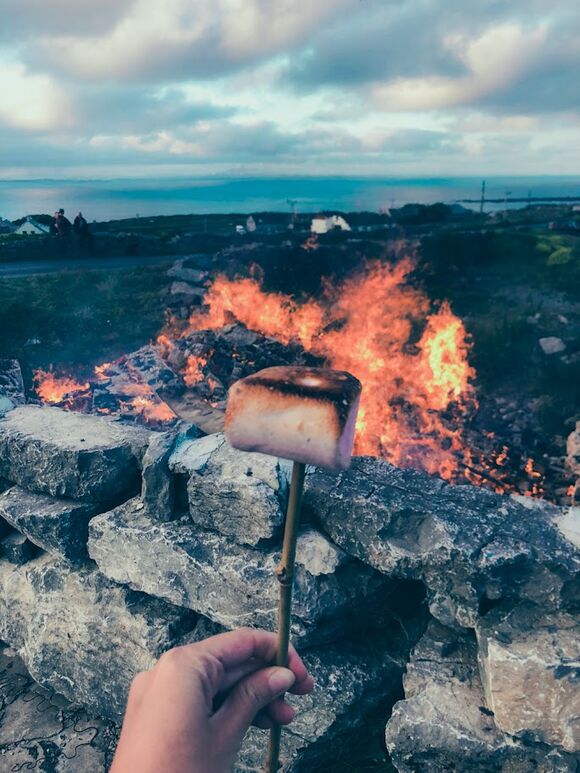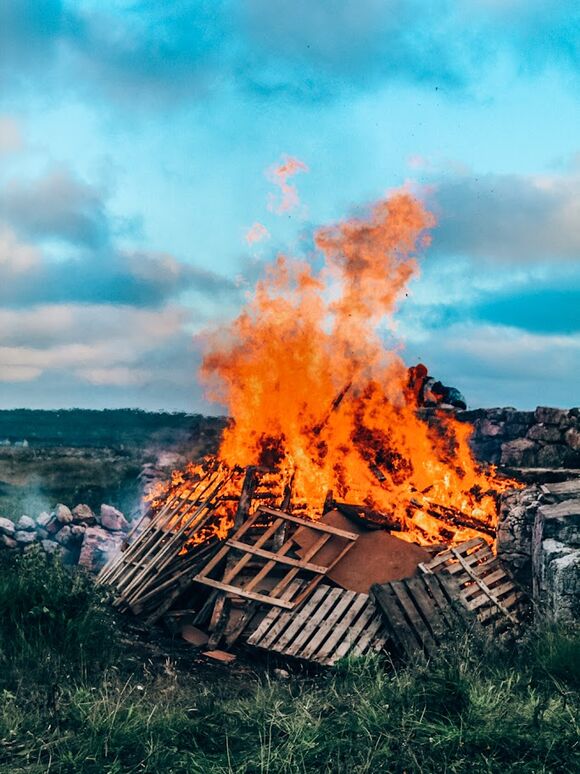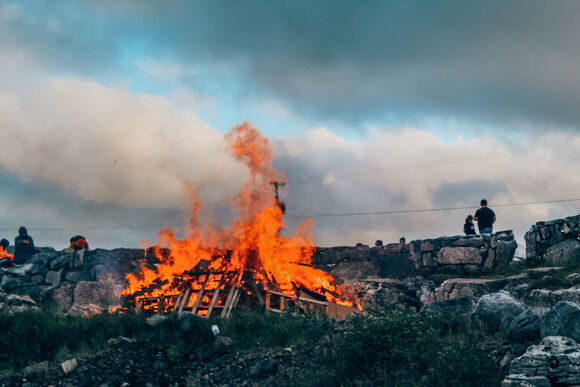Bonfires and Sunlight: Celebrating the Summer Solstice and St. John’s Eve
As the sun begins its long, golden descent on Saturday, June 21st, 2025, if you are in the Northern Hemisphere will find yourself bathed in the radiant fullness of the Summer Solstice. At exactly 3:41 a.m., the sun will reach its highest point in the sky, marking the astronomical beginning of summer and the longest day of the year. In Ireland, where the rhythms of the land have long danced in step with the turning sun, this moment is more than a celestial event; it is a time steeped in meaning, echoing with ancient customs and a still kind of magic.
Just two days later, on June 23rd, Ireland marks St. John’s Eve, or more commonly known now as ‘Bonfire Night’ an ancient midsummer fire festival with roots older than Christianity itself. Once a widespread tradition throughout the island, bonfires would blaze across the landscape at sunset. People gathered around flames for protection, healing, and a touch of revelry. Herbs were tossed into the fire, stories were told, and some brave souls leapt through the flames, shedding bad luck and old fears with every jump.
In more recent times my memories of Bonfire Night are forever bound to the wild heart of the West of Ireland on the island of Inishmore, where the Atlantic winds carry whispers of older times. In the weeks leading up to the night, locals would quietly begin their preparations, gathering driftwood, pallets, and anything that might catch a flame, though now and then, someone might slyly slip in the week's rubbish for good measure. The fires are built high, stacked with care and anticipation, ready to greet the midsummer dusk.
 Celebrating the Summer Solstice and St. John’s Eve
Celebrating the Summer Solstice and St. John’s Eve
But what stays with me most is the view from the island’s edge, looking back toward the mainland as night fell, the coastline would come alive with flickers of flame. Bonfires burned like beacons, stretching from beyond the Cliffs of Moher, across the lowlands of County Clare, and up through the stony threads of the Connemara coast. It was as if the land itself had caught fire, not in destruction, but in ancient celebration, each blaze a heartbeat echoing through the dusk.
But while they bask in the anticipation of some more summer sun in Ireland, the Southern Hemisphere is turning inward. At the exact same time, back in New Zealand, the Winter Solstice is unfolding. This weekend marks the shortest day of the year in Aotearoa, a quiet counterpart to the blaze of midsummer in Ireland. Here in New Zealand, the days are brief, the nights long and still. The light recedes early, inviting reflection, rest, and the gentle hope of new beginnings. While fires may still be lit, they are not for celebration but for warmth, for gathering close.
This global contrast the high sun of Ireland and the long shadow of New Zealand reminds us of the beautiful symmetry of the Earth’s rhythm. As we turn our faces to the sun in the North, our Southern siblings are holding space for the dark, each hemisphere in its own dance of renewal.
So this year, whether you find yourself standing in the glow of a Galway bonfire, watching the first light over Newgrange, or sipping tea on a frosty Christchurch morning, know that you're part of a shared, ancient cycle. The Solstice is a turning point, no matter where you stand on the globe. A time to honour the light, and the dark, and the eternal motion between the two. Because whether it’s the longest day or the shortest night, the Earth is still turning, and so are we.
- KD


